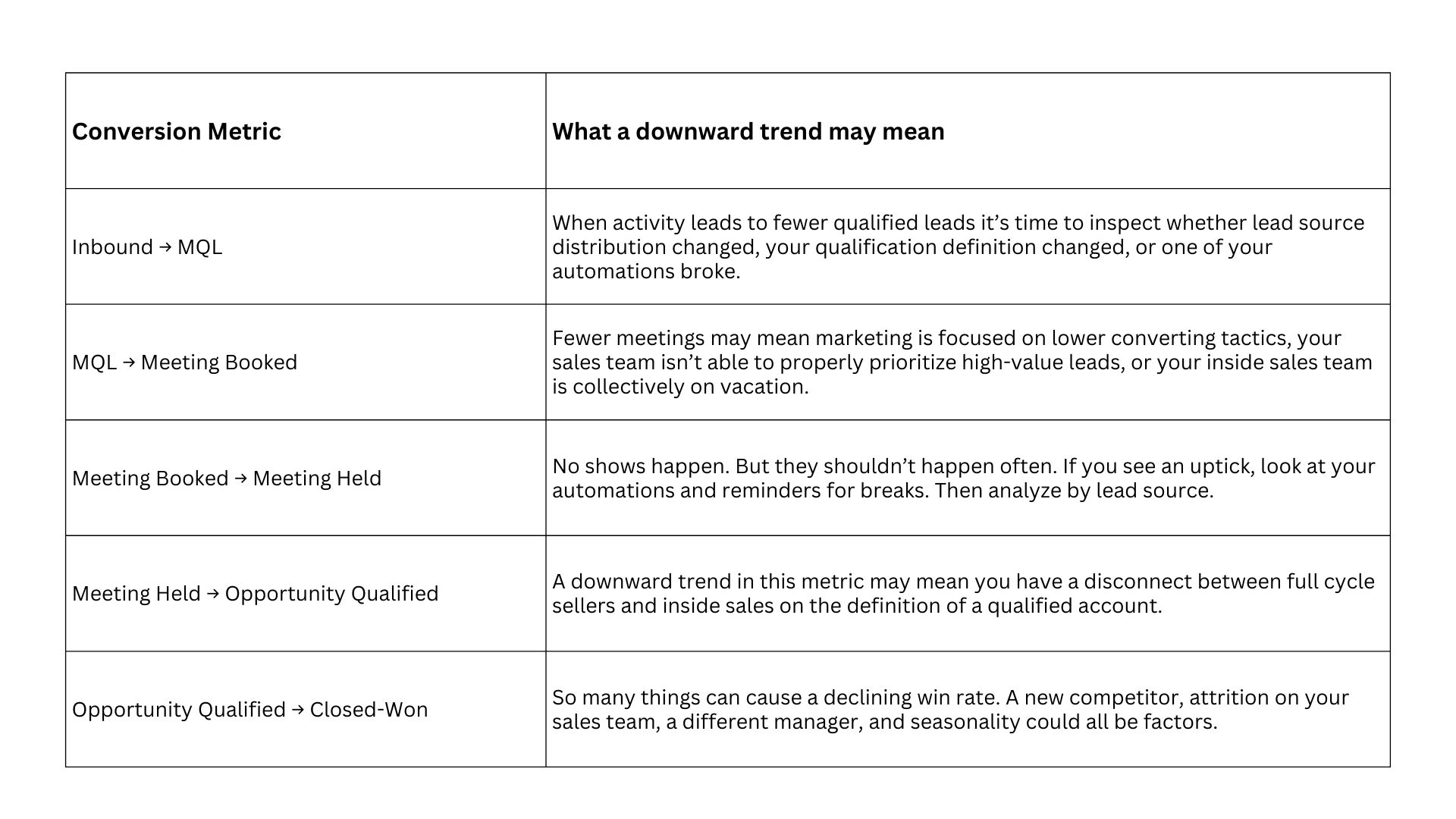

This post is part of a sponsored series with our friends at RevenueHero.
You’ve got leads. 📮
Great.
But somewhere between that shiny new MQL and a closed deal, things start to… fall apart. Demo requests go unanswered. Meetings don’t happen. Handoffs stall. Sales insists the leads are bad. Marketing swears they’re not following up on them.
Here’s the truth: They’re both right. Because you have a process problem.
And fixing it? That’s RevOps work.
This post breaks down how to:
Want to convert more inquiries to demos, and demos to revenue? Let’s fix your leaky funnel.
If you don’t know where the drop-offs happen, you can’t fix them.
Start by mapping the major conversion points:
Now, layer on:
Common leaky spots we see all the time:
Need a benchmark for demo funnel performance?
🔗 The Demo Funnel Metrics That Actually Matter – RevenueHero
Once you know where things fall apart, it’s time to patch the process.
Here’s where automation saves the day:
If someone fills out a form and doesn’t schedule, don’t assume they’re uninterested. Trigger an automated follow-up sequence via email or chat within minutes. Ideally with the rep’s calendar link baked in.
💡Covered in more depth: RevOps: You Can Eliminate Demo Scheduling Bottlenecks
Leads assigned but untouched after 15–30 mins? Auto-reassign them. Or escalate to a manager. Don’t let speed-to-lead die in someone’s inbox.
💡Set this up using tactics from: Speed to Lead for RevOps
When opportunities sit untouched past SLA or demo follow-up is missing, fire off Slack alerts to reps and managers. Use automated “nudge” logic to keep momentum moving.
🔗 Bonus: See how Palmetto improved lead-to-customer conversion by 30% using this approach → Palmetto Case Study – RevenueHero
Your funnel doesn’t need more reporting—it needs better reporting. The metrics we mentioned up top are super important, but only if you understand they’re only a tiny fraction of the problem.
If you see a statistic trending down compared to results from prior quarters, it’s time to roll up your sleeves and do some digging.
Here are the metrics and what a downward trend might mean:

Don’t forget that layering on inside salespeople and their manager isn’t the only way you should slice the data. Look at the lead source. If certain sources convert worse than others - or are avoided altogether - it’s not time to layer on alerts to pester the sales team. Figure out why they’re avoiding certain lead sources and if their logic is legitimate.
Not all leads are created equal. So not every lead deserves to be routed and chased after with the same enthusiasm. Your workflows should reflect this.
💡For a deep dive on demo conversion tactics, see: The RevOps Playbook for a High-Converting Demo Funnel – RevenueHero
What happens when the demo gets booked is just as important as how fast it was booked.
RevOps should:
This should never be a one-sided project. If your sales manager isn’t bought into this level of rigor, your salespeople will stop using your CRM as much and sabotage your data quality. This needs to be a collaborative effort that leadership believes in.
There’s nothing worse than watching solid lead flow get wasted because of leaky handoffs, bad processes, or invisible bottlenecks.
Your tech stack can help—but only if it’s backed by intentional logic, smart automation, and constant feedback.
The good news? You don’t have to guess.
Use your data. Build your workflows. Set your SLAs. And pressure-test your funnel at every stage.
Because revenue isn’t just about lead volume. It’s about what happens after someone says, “I’m interested.”
👀 Want a second set of eyes on your current process? RevenueHero will geek out with you and help pressure-test your flow.